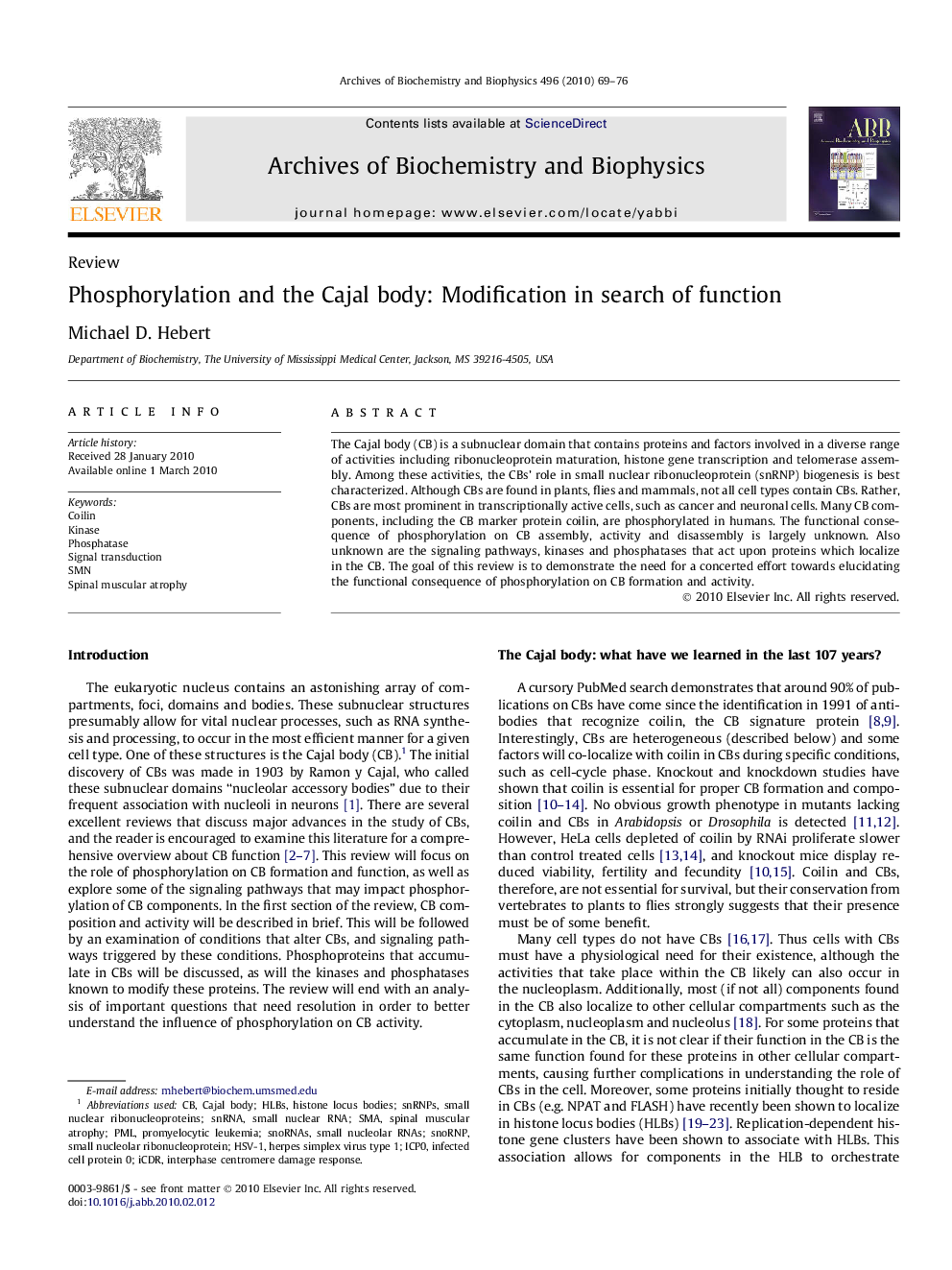| کد مقاله | کد نشریه | سال انتشار | مقاله انگلیسی | نسخه تمام متن |
|---|---|---|---|---|
| 1926220 | 1536437 | 2010 | 8 صفحه PDF | دانلود رایگان |

The Cajal body (CB) is a subnuclear domain that contains proteins and factors involved in a diverse range of activities including ribonucleoprotein maturation, histone gene transcription and telomerase assembly. Among these activities, the CBs’ role in small nuclear ribonucleoprotein (snRNP) biogenesis is best characterized. Although CBs are found in plants, flies and mammals, not all cell types contain CBs. Rather, CBs are most prominent in transcriptionally active cells, such as cancer and neuronal cells. Many CB components, including the CB marker protein coilin, are phosphorylated in humans. The functional consequence of phosphorylation on CB assembly, activity and disassembly is largely unknown. Also unknown are the signaling pathways, kinases and phosphatases that act upon proteins which localize in the CB. The goal of this review is to demonstrate the need for a concerted effort towards elucidating the functional consequence of phosphorylation on CB formation and activity.
Journal: Archives of Biochemistry and Biophysics - Volume 496, Issue 2, 15 April 2010, Pages 69–76